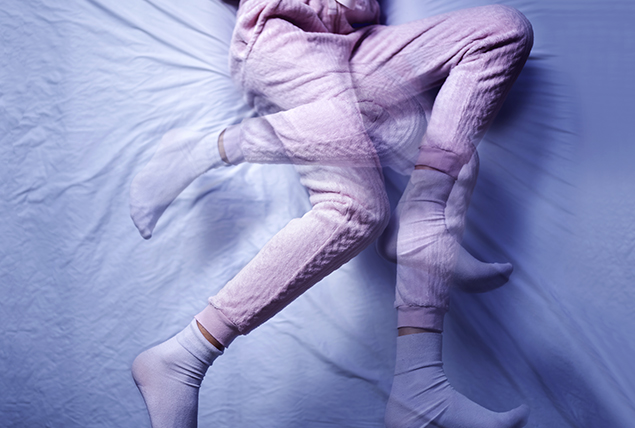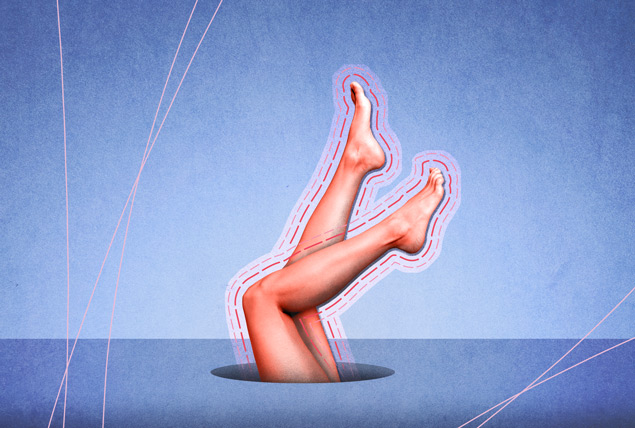Do You Have Restless Legs Syndrome?

Key Points
- While no one test can diagnose restless legs syndrome, various tests can rule out other conditions.
- The exact cause of RLS remains unknown. Studies remain inconclusive, but it's thought that it might be caused by an imbalance of dopamine.
- Untreated RLS can lead to a variety of complications, such as sleep deprivation, concentration problems and depression.
While the symptoms of restless legs syndrome (RLS) may appear as quirky or even rude bedtime behavior, the condition is a serious diagnosable illness.
How do you get a RLS diagnosis? Do you know the signs and symptoms of restless legs syndrome indicating there's a problem? Let's dive into this chronic health condition.
What are the common symptoms of RLS?
Restless legs syndrome causes a strong or uncontrollable urge to move your legs accompanied by an uncomfortable "crawling" sensation, said Daniel Atkinson, GP, and Clinical Lead at Treated.com, based in Manchester, United Kingdom.
"This can make people with RLS struggle to sleep at night, which can have a knock-on effect on their physical and mental health," he said.
Any factor contributing to poor sleep will severely impact a person's quality of life: physically, mentally and emotionally. Children may be misdiagnosed as having ADHD and adults may be less safe while operating machinery, besides a slew of other scenarios.
What causes RLS?
While studies remain inconclusive, Atkinson noted that although the exact cause remains unknown, it is thought that it might be caused by an imbalance of dopamine, which facilitates muscle movement.
"Dopamine levels naturally fall toward the end of the day, which could explain why symptoms tend to be stronger at night time," he said.
Dopamine is most widely known for its emotional properties and its role in addiction, but the neurotransmitter handles other, less flashy bodily functions. Movement is the most relevant to RLS, but dopamine is also a major factor in memory function—although trouble sleeping will also hinder cognitive functions.
How is RLS diagnosed?
While no one test can diagnose the condition, various tests can rule out any other conditions, said Fred Pescatore, M.D., based in New York City.
"Typically, a diagnosis is made after speaking with your physician regarding your symptoms, medical history and other factors," he said.
"The diagnosis of restless legs syndrome typically requires a physical exam and a review of symptoms, as well as certain tests to rule out other conditions. Your doctor may recommend blood tests, electromyography (EMG) or a sleep study to help make an accurate diagnosis," Pescatore finished.
A clinician might want to carry out a blood test to confirm whether a person is suffering from anemia, which can cause secondary RLS, Atkinson said.
"In some cases, if your symptoms are disrupting your sleep, you might be asked to undergo a sleep test called a polysomnography," Atkinson said. "This is a test that measures your breathing, heart rate and brain activity during the night. The results of this test can confirm your symptoms or look for other sleep-related issues such as sleep apnea."
What happens if you don't treat RLS?
Pescatore noted that untreated RLS can lead to a variety of complications. These potential complications include:
- Sleep deprivation
- Concentration problems
- Depression
"It can also lead to an increased risk of high blood pressure, heart disease and diabetes," he said.
Those consequences are direct, but the indirect impacts of inhibited sleep reach far and wide.
"As poor sleep quality is one of the primary symptoms of RLS, this can lead to a few other problems like fatigue, impaired cognitive function and irritability [which] can lead to sexual dysfunction or issues within a relationship that impedes sex," Atkinson said.
"RLS often tends to cause something called periodic limb movement disorder (PLMD) at night time—essentially involuntary movement of the legs. This can then interfere with your partner's sleep, which can intensify any existing issues within the bedroom."
A short temper and a strained relationship while living through the stress of a new diagnosis are just some of the indirect complications of restless legs syndrome.
What is the treatment for RLS?
Restless legs syndrome exists on a spectrum, according to Atkinson.
"Mild cases of RLS don't tend to need treatment," he said. "Symptoms can often be controlled with certain lifestyle changes, such as cutting out caffeine or nicotine before bedtime, regular daily exercise, reducing screen time before bed and avoiding certain medications that might trigger symptoms."
Marc Werner, a mattress inventor from Plantation, Florida, mentioned other non-medicinal forms of management.
"Massage can be a treatment to help ease pain and increase blood flow to help control the problem," Werner said. "A good massage is part of your sleep wellness treatment to invest in your well-rested sleep."
Pescatore noted that a plant extract may potentially help improve symptoms in more severe cases of RLS.
"A promising study found Pycnogenol, a plant extract originating from the bark of the maritime pine that grows along the coast of southwest France, improved all prominent symptoms of RLS, including a 63 percent decrease in throbbing, 33 percent decrease in crawling and 61 percent decrease in sleep problems," Pescatore said.
"To date, no serious adverse side effects on Pycnogenol have been observed or reported in clinical trials. Pycnogenol is found in over 1,000 products worldwide and can generally be found anywhere you buy nutritional supplements," Pescatore finished.
The standard method of treatment for RLS is by using dopamine agonists.
"They [dopamine agonists] work by increasing dopamine levels, which are thought to be lower-than-normal in people with RLS. Medicines for RLS also include opiate-based painkillers and treatments to help you sleep," Atkinson said.
There are other options available too, but typically for the short-term.
"You might be prescribed a sleep aid known as a hypnotic if your RLS is stopping you from getting enough sleep. These are usually only prescribed as a short-term solution, though," Atkinson said.
The dangers of sleep aids are well-known.
What are the side effects of common RLS treatments?
"The most common side effects of opiate-based painkillers are dizziness, tiredness and headaches, whereas the most common side effect of hypnotics is a feeling of being sleepy or 'hungover' after waking up," he said.
However, Atkinson said there are lesser known alternatives if a patient experiences side effects such as somnolence (sleepiness or drowsiness), nausea, vomiting and dizziness.
Sometimes, people have a far worse reaction to dopamine agonists. Although rare, some people experience impulse control disorder (ICD).
"Impulse control disorder is where you're unable to stop yourself from doing something reckless or harmful to yourself or others. So, for example, some people might become addicted to gambling, sex, alcohol or shopping," Atkinson said.
It won't be something you have to deal with for the long-term. However, you do need to speak to your doctor if you experience anything out of the ordinary.
"If this happens you should stop taking the treatment right away. The urges associated with ICD should subside after you stop taking your treatment," Atkinson finished.
The bottom line
Speak with your doctor. If you have the symptoms of restless leg syndrome, where you feel like you have to move, there is help.


















